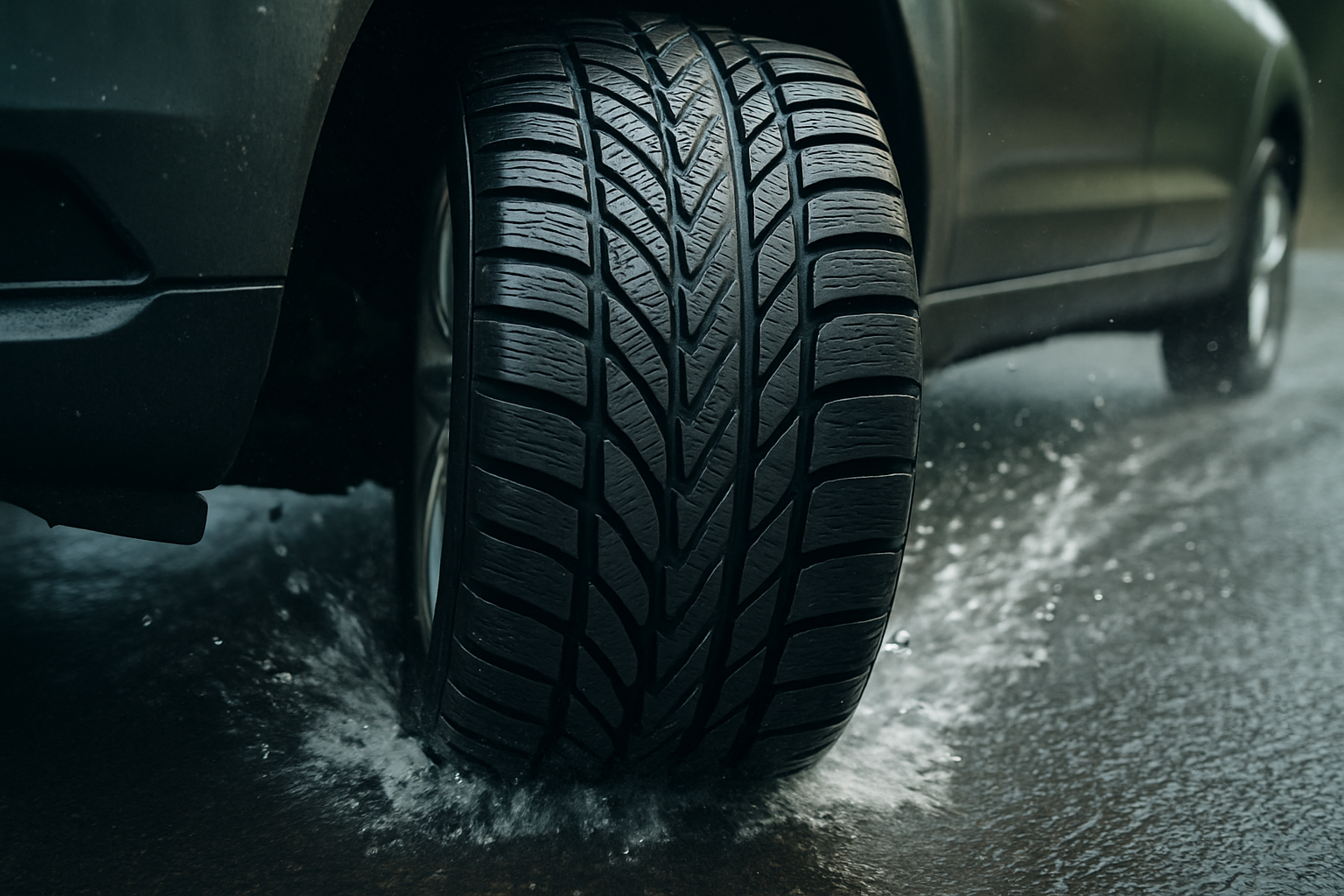Hydroplaning Mitigation: Advanced Tire Technologies
Imagine cruising down a rain-soaked highway, your vehicle suddenly losing traction and gliding across the water's surface. This heart-stopping moment, known as hydroplaning, has been a persistent challenge for drivers and automotive engineers alike. However, recent advancements in tire technology are revolutionizing wet-weather driving safety, offering innovative solutions to keep vehicles firmly planted on the road, even in the most challenging conditions.

Innovative Tread Patterns: Beyond the Groove
Traditional tire designs typically feature longitudinal grooves to channel water away from the contact patch. While effective to a degree, these designs often struggle in extreme conditions. Enter the era of advanced tread patterns. Tire engineers are now employing computer-aided design and fluid dynamics simulations to create intricate tread patterns that maximize water dispersion. These new designs incorporate multi-directional sipes, variable pitch sequences, and asymmetric tread blocks that work in harmony to rapidly evacuate water from beneath the tire.
Hydrophobic Compounds: Repelling Water at the Molecular Level
One of the most exciting developments in hydroplaning prevention comes from the world of materials science. Tire manufacturers are now experimenting with hydrophobic compounds in their rubber formulations. These water-repelling materials are inspired by nature, mimicking the properties of lotus leaves and other water-resistant surfaces found in the natural world. By incorporating these compounds into the tire’s surface, water is actively pushed away from the contact patch, significantly reducing the likelihood of hydroplaning even in standing water.
Dynamic Tread Technology: Shape-Shifting Rubber
Imagine a tire that could alter its tread pattern in real-time to adapt to changing road conditions. This futuristic concept is becoming a reality through dynamic tread technology. Using a combination of smart materials and embedded sensors, these tires can physically modify their tread pattern while in motion. When sensors detect wet conditions, the tire’s surface reconfigures to maximize water channeling capabilities, reverting to a more traditional pattern when conditions improve. This adaptive approach ensures optimal performance across a wide range of driving scenarios.
Micro-Pumping Systems: Active Water Removal
Taking water evacuation to the next level, some tire prototypes now incorporate micro-pumping systems within the tire structure. These tiny pumps, powered by the tire’s rotation, actively remove water from the contact patch, creating a near-vacuum effect between the tire and the road surface. This technology not only reduces hydroplaning risk but also enhances overall wet traction, providing drivers with unprecedented control in adverse weather conditions.
Nano-Textured Surfaces: Gripping at the Microscopic Level
Advancements in nanotechnology are finding their way into tire design, with manufacturers developing nano-textured surfaces that grip the road at a microscopic level. These surfaces feature countless tiny protrusions that dramatically increase the tire’s contact area with the road, even when a thin film of water is present. The result is a tire that maintains grip in conditions where traditional designs would begin to hydroplane, offering a significant safety advantage in wet weather driving.
Integration with Vehicle Systems: A Holistic Approach
The future of hydroplaning prevention lies not just in tire technology alone, but in its integration with broader vehicle systems. Advanced tire pressure monitoring systems (TPMS) now communicate real-time data about tire condition and road surface to the vehicle’s traction control and stability systems. This holistic approach allows for proactive adjustments to vehicle dynamics, further reducing the risk of hydroplaning and enhancing overall safety.
Environmental Considerations: Sustainable Safety
As these technologies evolve, tire manufacturers are also focusing on sustainability. Many of the advanced compounds and materials used in these hydroplaning-resistant tires are being developed with environmental impact in mind. From renewable raw materials to improved wear resistance that extends tire life, the goal is to create safer tires that also minimize environmental footprint.
The Road Ahead: Challenges and Opportunities
While these advancements in tire technology offer exciting possibilities for improving wet-weather driving safety, challenges remain. Cost considerations, durability concerns, and the need for standardization across the industry are all hurdles that must be overcome. However, the potential benefits in terms of reduced accidents and increased driver confidence are driving continued investment and innovation in this field.
As we look to the future, the humble tire is poised to become one of the most technologically advanced components of modern vehicles. These innovations in hydroplaning mitigation not only promise to make wet-weather driving safer but also showcase the incredible potential of interdisciplinary engineering in solving complex automotive challenges. For drivers, this means a future where the fear of losing control on rain-slicked roads becomes a thing of the past, replaced by confidence in the advanced technologies working tirelessly beneath their vehicles.




